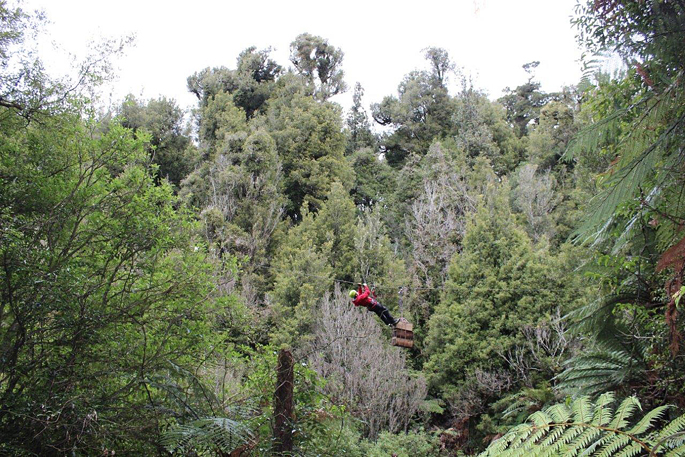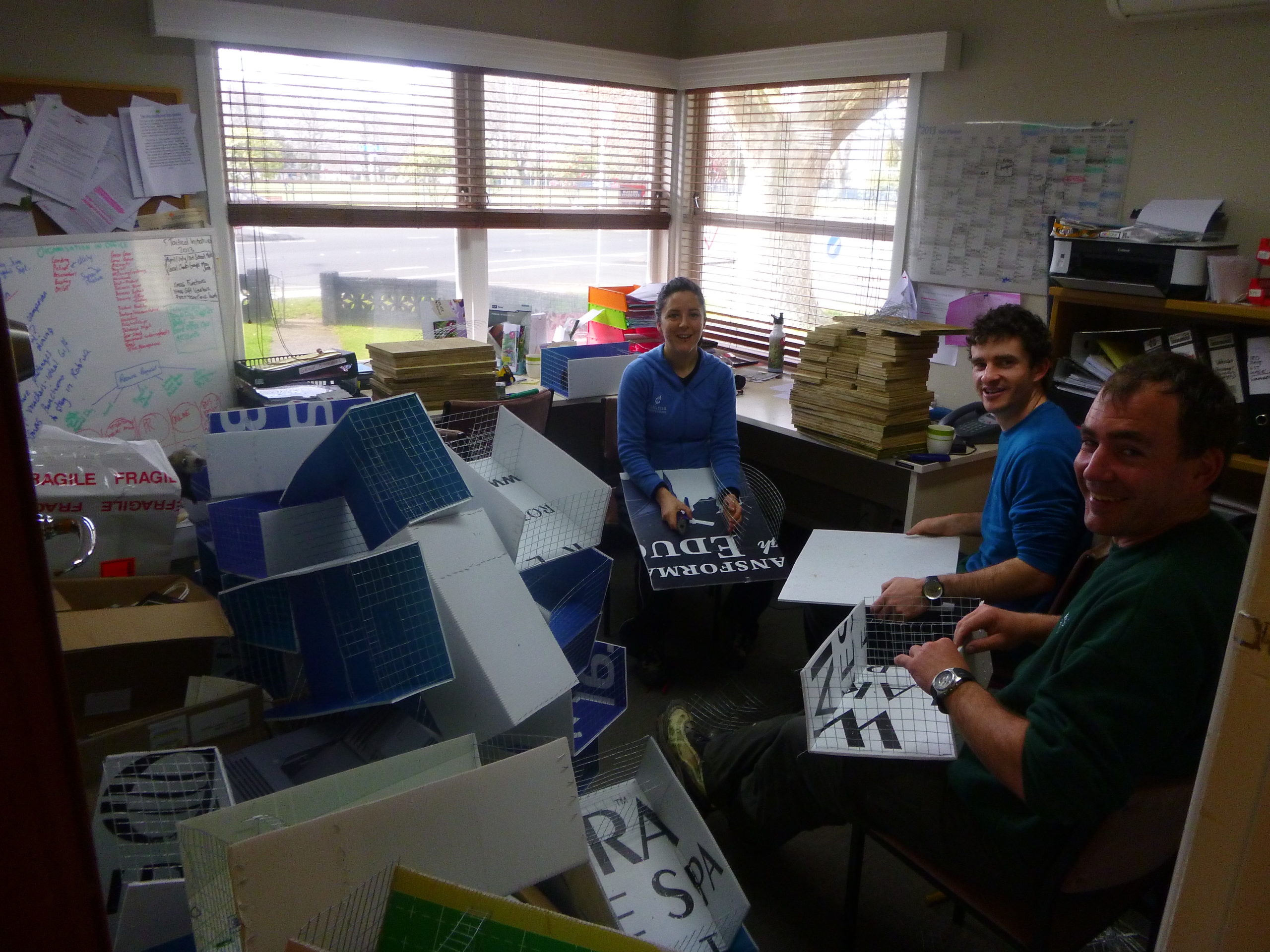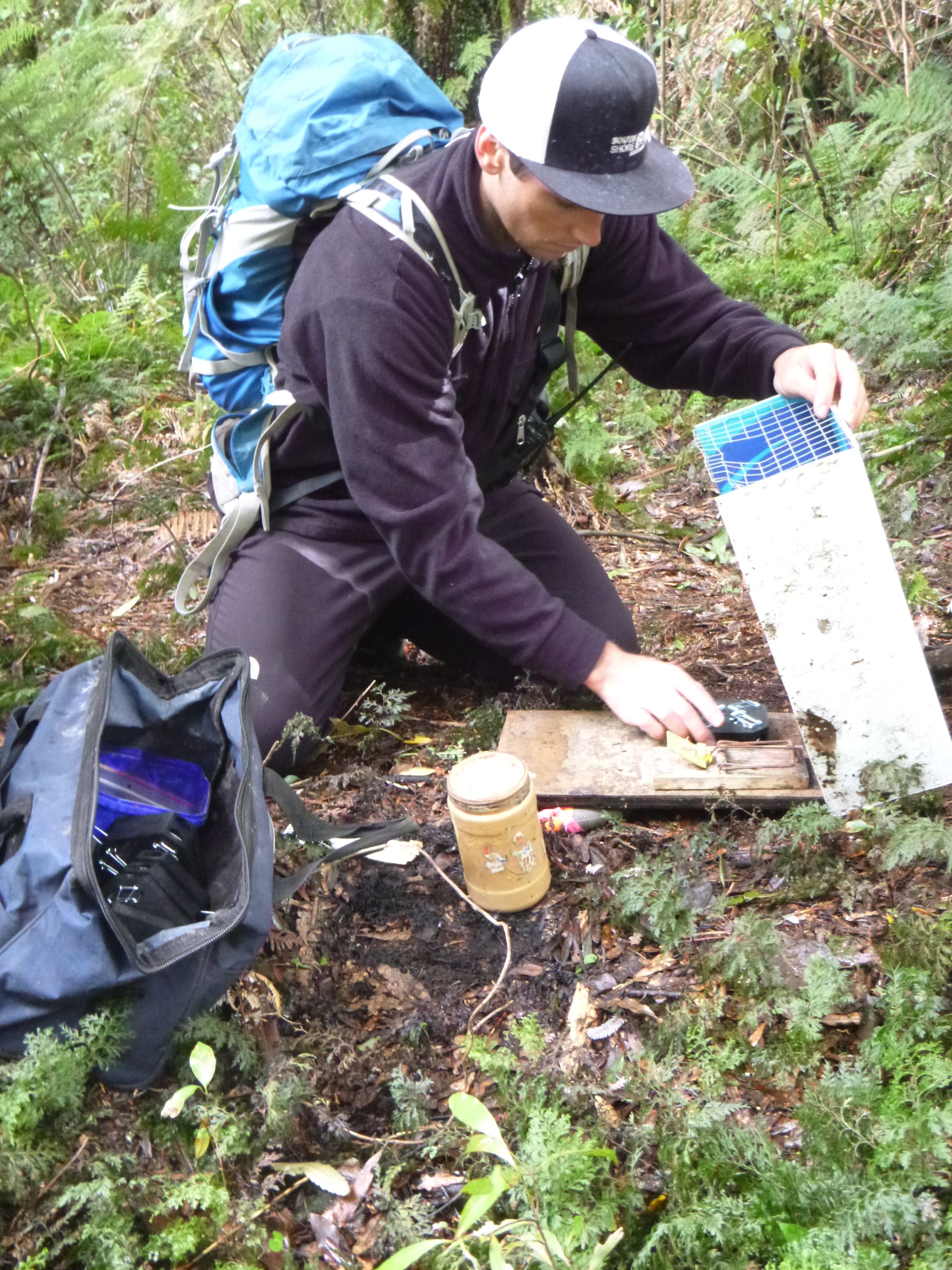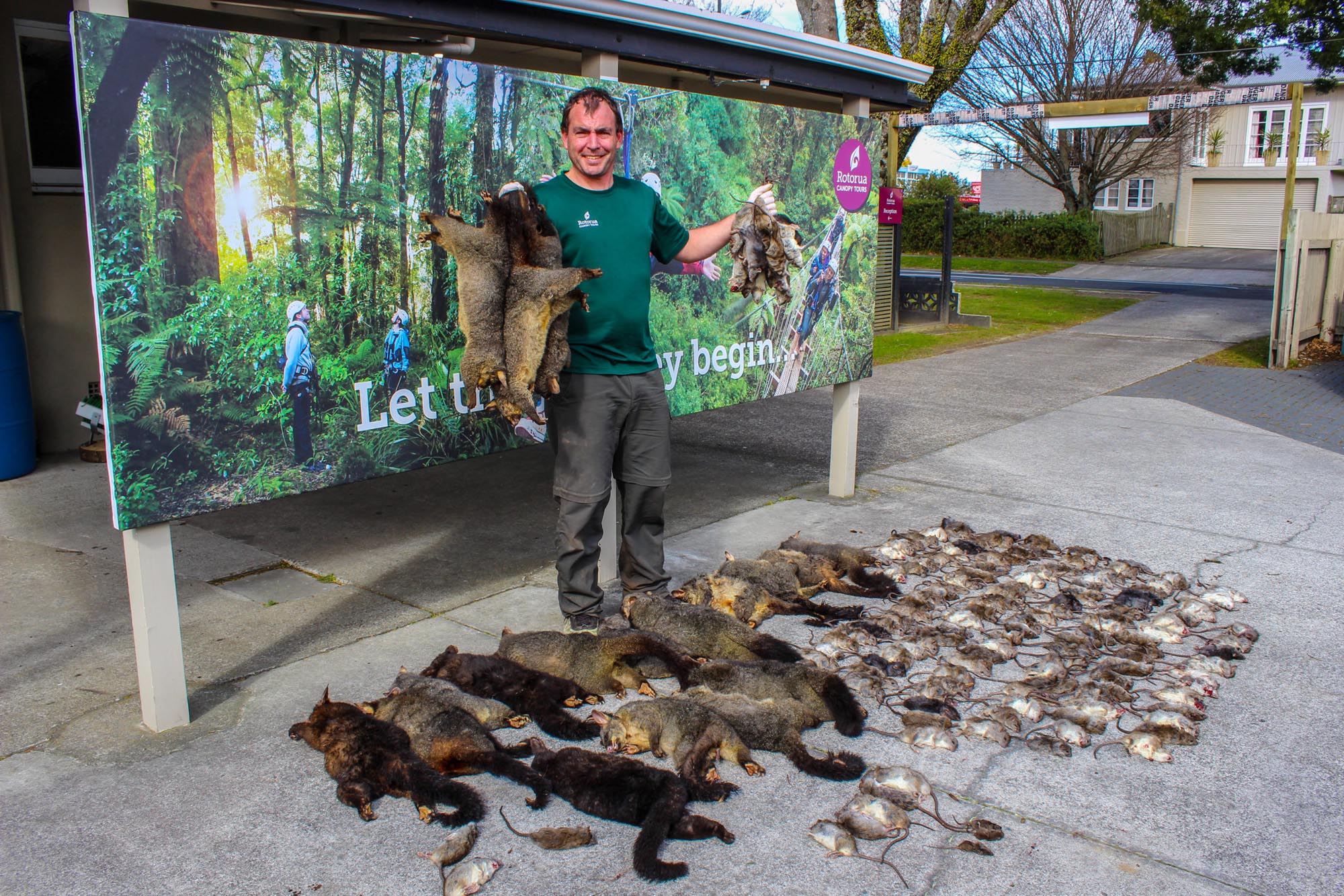It all started in 2008 with James Fitzgerald, a young guy with a bold vision and his buddy, engineer Andy Blackford. James had a vision to create a visitor experience that was the most premium and sought-after experience in New Zealand.
James found an amazing piece of native forest only minutes from Rotorua and got to work building the platforms, ziplines and access trails. While building James and Andrew grew more and more aware of the deathly silence in the forest. This was a native forest that should be filled with birdsong…. something needed to be done!
They knew there was a problem and made a promise to return this forest to a prehuman state so everyone could experience what a native forest in New Zealand should be.
Photo: Guides ziplining traps into the forest during phase one. The bare trees that can be seen is caused by possum that strip the trees of their foliage.
Knowing there must be pests in the forest they decided to do some monitoring to determine the extent of the problem. Trails were made called ‘monitoring lines’ and along these trails they placed ‘chew cards’ at intervals.
These cards are simply corrugated plastic smeared with peanut butter (a favourite treat for rats) and are designed to record animal bite marks so we could tell what pests were around.
Unfortunately, when we returned the following day, the cards were completely obliterated. These results told us there were rats and possums everywhere!
We also used tracking tunnels, and sure enough the pitter patter of rat feet was there too. Pest-control measures couldn’t come a moment too soon.

Photo: The Canopy Tours team building the bird proof casings for traps, a labor intensive job.
In 2013 after running the zipline tour for a year they had saved up $35,000 which was enough money to get started on their conservation dream.
‘Phase 1’ of the conservation project concentrated on a 50ha section of the Reserve, directly around the zipline course.
They cut 10 kilometres of trails called ‘trapping lines’ and placed manual instant kill traps all the way along it. In total, 1100 traps were placed into the forest in August 2013 including rat, mouse, and possum traps.
Hundreds of hours were spent preparing the trapping lines, hand-making bird-proof casings for the traps and carrying them into the forest.

Photo: Baiting traps with peanut butter and clearing out the dead animals was one of the messy jobs for the team.
Then the traps were all pre-fed in the lead up to entice pests into the area for maximum effect. Then one night all the traps were set live. The next day they went in and cleared the traps pulling out the dead animals. They re-set all the traps – and then did the same again the next day, and the next, for an entire week!
It took 750 hours of human labor to achieve, but the results were terrific! Over 800 rats, possums, stoats, mice, and cats were caught during this seven-day blitz, and the birds and insects slowly started returning to this safe area of the forest.

Photo: Guide Gary with one nights haul of pests from phase 1 of Canopy Tours conservation efforts in the Dansey Road Scenic Reserve.
Having begun trapping pests in a 50ha section of forest, our Rotorua Canopy Tours staff quickly learnt some hard lessons while trying to maintain their conservation efforts.
Re-setting traps and keeping them effective is time-consuming, exhausting, motivation sapping, gross and overall, hugely expensive! We couldn’t keep it up – it nearly financially broke the company in its first winter trading. It also opened their eyes to the scale of the problem across the whole of New Zealand – “If we can catch over 800 pests in the Dansey Road Scenic Reserve in just one week in an area the size of 50 football fields, what else is out there?”
Ultimately, their approach proved unsustainable. With the time and resources required to simply maintain a 50ha section of forest, there was no hope of expanding this trapping operation further into the reserve in future. It was estimated that they needed to catch at least another 10,000 rats and 1500 possums to really turn this forest around.
They kept the existing trapping lines going for two years but in the end decided another method was needed. “We weren’t going to win the battle this way”.